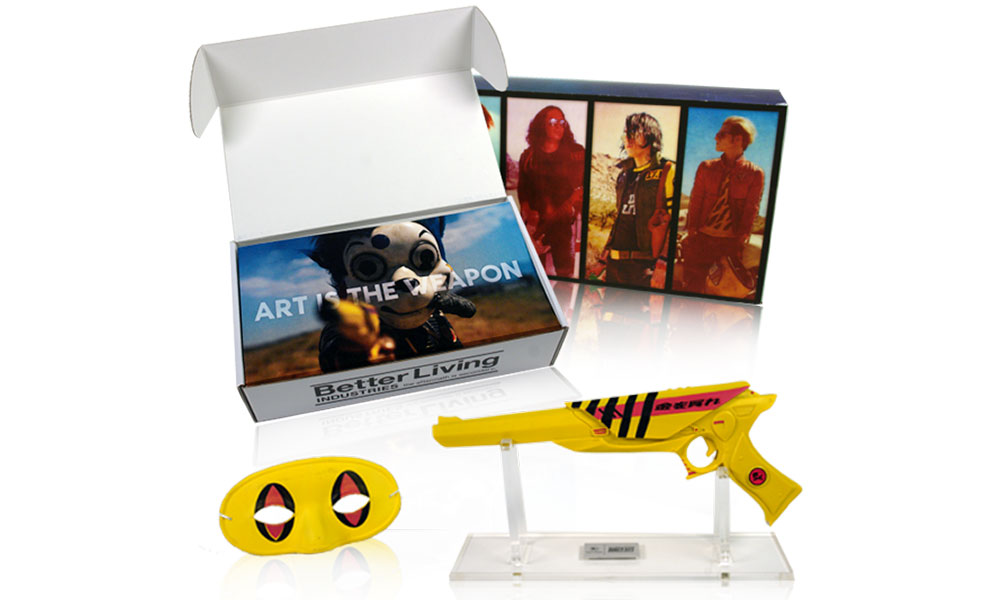Strategy May 03, 2018
Rise in Music Merch Means Opportunity for Promo Industry
When it comes to music, there’s ever more money in merch.
That’s good news for musical artists – and promotional products pros with the savvy to capitalize.
As the Licensing Industry Merchandisers’ Association reports, sales of music merchandise tallied $3.1 billion in 2016 – a 10% increase over the prior year. Furthermore, over the last two years, the volume of branded music merchandise available for consumer purchase has tripled, according to Edited, a company that specializes in retail analytics.
Facebook Live
Watch as Joe Haley and "Facebook" Vinnie Driscoll discuss music merchandise in this lively discussion.
Why the surge? Recorded music doesn’t generate the cash it once did. Sales of CDs have plummeted. Vinyl albums enjoy niche popularity, but aren’t impossible-not-to-have staples as they once were for music fans. At the same time, revenue from online downloads is comparatively paltry, and has thus failed to fill the void left by declining hard copy sales.
To keep the bucks rolling in, musical acts are touring extensively. And, especially relevant to the promotional products industry, stepping up their efforts to sell branded products.
“Artists are relying more on merchandise for their profits,” Josh Ebrahemi, vice president and partner at Los Angeles-based Top 40 distributor Jack Nadel International (asi/279600), told Counselor. For example, Bob McLynn, manager for Panic! At the Disco, recently told Rolling Stone that 30% of the band’s profit on its most recent tour was from sales of branded band merchandise.
That Ebrahemi knows what he’s talking about when it comes to music merch isn’t a surprise. The JNI team has delivered branded solutions for more than 100 bands/musical artists, including Bruno Mars, Michael Bublé, Thirty Seconds to Mars, Wiz Khalifa, and Coldplay. “Music took a dive from 2003-2008, but has grown ever since and now is a great market to be in for merchandise and promotional products,” Ebrahemi said.
Products & Trends
The solutions JNI delivers to music clients are designed for retail. They’re always made with the act’s image and audience in mind. For example, JNI recently produced a gift-with-purchase for the band My Chemical Romance. It included a custom poly-resin collectible gun, matching mask, and acrylic stand depicting each band member. So popular was the GWP that it sold out in weeks from the band’s website. “The items must have a high perceived value and be something the customers in that demographic will truly want to purchase,” Ebrahemi said. “Accessories, themed items to that artist, collectibles, GWPs and VIP kits are always popular.”

So, of course, are T-shirts, says Patrick Mahoney, vice president and general manager of Manhead Merch, a music and entertainment merchandising company that works with major artists that include Fall Out Boy, Shania Twain, Morrissey and many more. “We still sell a lot of T-shirts. It’s the classic. It’s not ever going away,” Mahoney told Counselor.
At the same time, however, merch is also evolving beyond the tee to encompass higher end, exclusive items as well, Mahoney said. Fall Out Boy, for example, recently had hand-painted $150 denim jackets for sale. Meanwhile, as Rolling Stone noted, The Weeknd has sold $240 denim Sherpa jackets, Kanye West has pedaled $1,050 thigh-high boots, and Drake’s OVO line has featured a $1,095 Canada Goose bomber jacket that has a collar made of coyote fur.
While such select items command attention, it’s the more everyman-priced offerings that continue to comprise the lion’s share of sales. And in this, there’s room for products with widespread pop culture appeal to make inroads to the music market. “2017 was the year of the fidget spinner and my guess is that 2018 is the year of the pop socket,” Mahoney said.
There are other trends to be on the lookout for too, including growing demand for women’s apparel with a stylish feminine cut, Mahoney said. “Not only can we get good-quality, fashion-forward blanks out of the blank imprintables market, we’re doing more custom cut-and-sew than ever before,” he said.
Consumer taste for retro prints and graphics in music apparel is also sharpening. “Our 2018 Fall Out Boy collection is based on homage to iconic graphics from the 1980s and 1990s. We expect that to expand over the coming year,” Mahoney said. “Also, I’m seeing a lot of cool – I’ll call it classic – resort wear-style graphics… like back in the day when people wore that ‘Hawaii ’75’ multi-color gradient print, complete with a sunset and palm trees T-shirt until it fell apart.”
New School Sales
While certain merch trends are taking a cue from the past, there’s an increasingly new approach to how branded products are sold in the niche. You already guessed that online sales are rising – and they are. But in addition, artists like Beyoncé and Jared Leto are leveraging an app, Sidestep, that lets fans order concert merchandise online and then pick it up at a venue prior to a performance. Artists are also spurring merch sales through pop-up stores. “Our pop-up retail activations over the last few years have been successful and fun to do,” said Mahoney. “We’ve done stores for Fall Out Boy, Panic! At the Disco, and Morrissey in cities like New York, Los Angeles and London.”
Also, to help spark sales of downloads, CDs and vinyl albums, companies like Manhead are creating exclusive products to bundle with the music offering. “We also mix in the ability to buy tickets,” Mahoney said.
Given the intensified focus on merch, it appears that if promo pros play the right notes, the music niche could help create a sweet tune for the bottom line.
